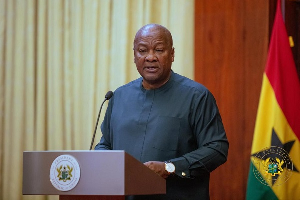In a nation that is rapidly evolving, nothing is more fundamental to our growth than access to efficient and uninterrupted power. Nowhere is this truth more evident than in our healthcare sector, where the stakes are no less than life and death.
Imagine, for a moment, the life-saving devices that rely on a constant flow of electricity—ventilators that sustain breathing, incubators that nurture premature babies, and dialysis machines that cleanse the blood. Picture the vaccines and medicines that must be stored under precise conditions to remain effective. Electricity is the unseen lifeline, quietly but powerfully supporting every aspect of health care across our country.
Yet, we find ourselves at a crossroads. The challenge of ensuring a sustainable and reliable electricity supply is one that demands our collective ingenuity, our resilience, and our unwavering commitment. It is not enough to simply identify the problems; we must forge a path forward, one that leads to real and lasting solutions. It swerves my imagination that year-on-year the dream to a reliable electricity supply in Ghana is still a nightmare.
The World Health Organization (WHO) has long emphasized the critical role that energy plays in achieving sustainable development goals. Energy is not just about power; it is intricately linked to public health, gender equality, food security clean water, education, economic growth, and even climate action. The absence of clean, sustainable energy inflicts a heavy toll on the world’s poorest populations, with the elderly, women and children bearing the brunt of its harmful consequences. Every day, 2.3 billion people in low- and middle-income countries rely on inefficient, polluting fuels for cooking. The smoke from these fuels silently steals millions of lives each year.
Consider this stark reality: around 1 billion people globally, most in poor and rural communities, rely on healthcare facilities that lack reliable electricity. In sub-Saharan Africa, only half of hospitals enjoy a consistent power supply. This is more than an inconvenience; it is a crisis. Without dependable electricity, life-saving medical devices fall silent, basic services like lighting and clean water become luxuries, and the quality of health care plummets. If we do not act swiftly, we will fail to meet the critical targets set by the 2030 Agenda for Sustainable Development and the Paris Agreement.
In response to this urgent need, the World Health Organization, alongside other global leaders, launched the Health and Energy Platform of Action (HEPA) in 2019. This initiative is not just a program; it is a promise—a promise to accelerate access to clean cooking technologies and electricity for healthcare facilities. It is a commitment to work together, to pool our resources and our resolve, and to drive the universal electrification of healthcare facilities across the globe. We must be driven.
We must recognize that ensuring universal access to modern energy services in healthcare facilities is not just an essential goal; it is a moral imperative. The United Nations’ Sustainable Energy for All (SE4All) initiative, launched in 2012, sets a bold target: universal access to clean, modern energy by 2030. It calls on us to double the global rate of energy efficiency and the use of renewable energy. And it places healthcare facilities at the forefront of this mission.
In the realm of health care, access to electricity is nothing short of vital. It is the bedrock upon which universal health coverage must be built. The World Health Organization has identified access to essential medicines and technologies as a cornerstone of health care, and many of these technologies are powerless—literally powerless—without electricity.
So, as we reason together here today, let us pledge to harness the power of innovation, collaboration, and determination to transform our healthcare system. Together, we can light up every healthcare facility in Ghana, ensuring that no life is lost for lack of electricity.
Prioritizing Sustainable and Reliable Electricity Supply for Quality Healthcare Delivery in Ghana: A Path to Achieving SDG 7.
The importance of electricity in our healthcare facilities cannot be overemphasised.
• Electricity is the lifeblood of modern healthcare. It powers the critical medical equipment that our doctors and nurses rely on every day. Consider for a moment the essential devices such as X-ray machines, MRI scanners, and ventilators—these are not just machines; they are tools that save lives. Without electricity, these devices cannot function, and without these devices, our ability to diagnose, monitor, and treat patients is severely compromised.
• Beyond the machines themselves, electricity also plays a crucial role in communication and information management within our healthcare facilities. Reliable power keeps our telephones, internet connections, and electronic medical record systems running smoothly. This seamless communication is essential for coordinating patient care, consulting with specialists, and managing patient information accurately and efficiently. It ensures that everyone involved in a patient’s care is on the same page, which leads to better outcomes.
• But the role of electricity doesn’t stop there. It is also essential for maintaining the right environmental conditions in our hospitals and clinics. Think about the lighting, heating, ventilation, and air conditioning systems that create a safe and comfortable environment for patients and healthcare staff alike. Proper lighting and temperature control are not just about comfort—they are critical for preventing infections, promoting healing, and ensuring that care is delivered in the best possible conditions.
• And then there are the life-saving procedures—surgeries, emergency treatments, neonatal care—all of which depend on uninterrupted power. In an operating room or a critical care unit, even a brief loss of electricity can have catastrophic consequences. It is electricity that sustains life support systems, powers anesthesia machines, and allows continuous monitoring of patients in their most vulnerable moment.
The Sustainable Development Goal 7 (SDG 7) and Its Relevance to Ghana's Energy and Healthcare Sectors.
The relationship between Sustainable Development Goals (SDGs) 3 and 7 is deeply interconnected, especially when it comes to ensuring a reliable electricity supply, which is crucial for Ghana’s health care delivery and development.
1. SDG 3: Good Health and Well-being
SDG 3 focuses on ensuring healthy lives and promoting well-being for all ages. Reliable electricity is essential to achieving this goal because it enables healthcare facilities to operate effectively. Electricity powers medical equipment, lighting, heating, ventilation, and communication systems, all of which are vital for improving healthcare outcomes and overall public health.
2. SDG 7: Affordable and Clean Energy
SDG 7 aims to provide access to affordable, reliable, sustainable, and modern energy for everyone. A stable electricity supply is central to this goal, as it is necessary for powering homes, businesses, and essential services like healthcare facilities. Reliable electricity supports economic growth, enhances productivity, and improves living standards, while also reducing dependence on polluting and inefficient energy sources.
The connection between SDGs 3 and 7 highlights the crucial role of electricity in healthcare and overall well-being. Without reliable electricity, healthcare facilities struggle to deliver quality care, leading to poor health outcomes and increased disparities. Furthermore, lack of access to stable energy impedes economic development and poverty reduction, further affecting health and well-being.
Current State of Electricity Supply Situation in Ghana
Over the past decade, Ghana has faced significant challenges in its power sector, which have had a substantial impact on our economy. Electricity is the lifeblood of any modern society, and when it's in short supply, the consequences are far-reaching. In fact, the World Bank has identified electricity as the second most critical issue for businesses in Ghana, noting that we lost about 1.8 percent of our GDP during the 2007 power crisis. To put it into perspective, research from the Institute of Statistical, Social and Economic Research (ISSER) at the University of Ghana estimated that in 2014 alone, the power crisis cost us roughly $680 million, which is about 2 percent of our GDP.
Ghana has long recognized the importance of electricity access, and in 1989, we embarked on an ambitious journey with the National Electrification Scheme (NES). This project aimed to extend electricity to every corner of the country over a 30-year period, from 1990 to 2020. At the start, only 15-20 percent of our population had access to electricity. But through the combined efforts of the NES and the Ghana Energy Development and Access Project (GEDAP), we've seen remarkable progress. By 2009, 66.7 percent of Ghanaians had access to electricity. This number grew significantly to 80.51 percent in 2015, 82.5 percent in 2016, and most recently, 88.85 percent in 2023.
However, it’s important to understand that access to electricity isn't just about having a connection to the grid. It’s also about ensuring that the electricity is reliable and affordable. Unfortunately, this is where we still face significant challenges in the management of the sector. Despite the progress we've made in expanding access, our power sector continues to struggle with reliability. We’ve experienced severe power rationing and load shedding during various periods— 1983-1984, 1997-1998, 2003, 2006-2007, up to today, despite available infrastructure. These disruptions have often been linked to issues like government default in honouring payment obligations to actors on the electricity supply value chain and interruptions in natural gas supply,
These challenges remind us that while we've made great strides in expanding electricity access, the journey isn’t over. We must focus not only on connecting more homes to the grid but also on ensuring that the electricity supply is reliable and sustainable. This is critical not just for our economic growth but for the well-being of every Ghanaian. Reliable electricity is essential for businesses to thrive, for students to study, for hospitals to operate, and for families to live comfortably. It’s a cornerstone of development, and it’s something we must continue to work on together.
3. The cost of load shedding on Healthcare Delivery
The ongoing power outages have had a severe impact on healthcare delivery in Ghana, and recent cases highlight the seriousness of this issue.
• One heartbreaking incident occurred on March 26, 2024, when a mother tragically lost her three-day-old baby at Tema General Hospital. She believes the death was due to a power outage, commonly known as dumsor, at the facility. In her grief, she cried out, "It's painful, they have killed my child because of dumsor; I am in pain. We have nothing to say to the hospital. A hospital like Tema General said they didn’t have petrol in the generator. Is this how we are going to act in this country?" While the hospital has denied that the power outage caused the death, the reality is that the life of this precious baby is lost and can never be brought back.
• Another troubling situation was reported on April 30, 2024, when Ghanaweb revealed that critical surgeries at Korle Bu Teaching Hospital had to be cancelled due to power outages. A medical doctor, who chose to remain anonymous, told Citi News, "These are critical cases; we can't afford to risk people's lives."
• Most recently, on August 23, 2024, Citinews reported that two lives were lost at Chereponi District Hospital after prolonged power outages. The hospital had been without electricity for nearly two weeks, bringing its operations to a halt. A healthcare provider at the hospital shared, "The lights have caused a lot of problems in our lives. Just three days ago, we lost two people due to the power outage, and there are some C-sections that need to be done, but because of the light issue, they can’t carry on with those things."
These recent cases are deeply concerning. But if we think back to a few years ago when dumsor was even worse, we can only imagine how many more lives were lost because of these power outages.
These stories remind us of the urgent need to address the power supply challenges in our country. The cost of inaction is simply too high, especially when it comes to the loss of human lives.
Broader Implications of Unreliable Electricity Supply on Public Health
It is essential to recognize the profound impact that reliable electricity—or the lack thereof—has on public health. In many ways, the health of a nation is deeply intertwined with the stability of its energy supply.
• Impact on Healthcare Delivery: First and foremost, let’s consider healthcare delivery. When electricity is unreliable, it disrupts the very foundation of our medical services. Surgeries are delayed, diagnostic tests are halted, and life-saving treatments are compromised. Imagine a hospital in the midst of a power outage—essential equipment like ventilators, incubators, and dialysis machines come to a standstill. The impact on patient care is immediate and severe, often resulting in worsened health outcomes, and in some tragic cases, loss of life.
• Compromised Disease Prevention: Beyond the walls of hospitals, unreliable electricity also hampers our efforts to prevent and control diseases. Public health interventions, such as vaccination programs and disease surveillance, rely on a consistent power supply. Power outages can lead to improperly stored vaccines, disrupted water treatment processes, and challenges in disseminating critical health information. The result? An increased risk of disease outbreaks and public health emergencies.
• Exacerbation of Health Inequities: The burden of unreliable electricity does not fall equally. Vulnerable populations—women, children, the elderly, and those living in rural or underserved areas—bear the brunt of these challenges. When power fails, access to essential healthcare services is often cut off, exacerbating existing health disparities and deepening social inequalities.
• Increased Mortality and Morbidity: The consequences extend further. Unreliable electricity contributes to higher rates of illness and death, especially in regions where healthcare infrastructure is already fragile. During heatwaves or natural disasters, power outages can lead to preventable deaths from heat-related illnesses or the inability to provide timely medical interventions. In these moments, the lack of reliable power can turn a crisis into a catastrophe.
• Mental Health Impacts: Lastly, we must acknowledge the mental toll. Prolonged power outages create stress, anxiety, and a sense of insecurity. Daily routines are disrupted, essential services are lost, and the uncertainty of what lies ahead weighs heavily on communities. Mental health services, too, are affected, leaving those in need of support even more vulnerable.
Disproportionate Impact of Electricity Load shedding on Vulnerable Populations
It’s vital to highlight how unreliable electricity supply disproportionately impacts some of the most vulnerable members of our society—women, children, and the elderly.
• Women, often the primary caregivers in their families, are particularly affected by power outages. When the electricity fails, it disrupts their ability to provide essential healthcare and nutrition. Maternal health services, which depend on electricity, are compromised, increasing the risk of complications during childbirth and threatening the lives of both mothers and infants. In rural areas, women who rely on electricity for small businesses face economic hardships when the power goes out, further deepening financial insecurities.
• Children are especially vulnerable during power outages. Interruptions in healthcare services, such as vaccination programs and pediatric care, lead to higher rates of illness and mortality. Additionally, when electricity is unavailable, children's education suffers. Without proper lighting and resources, their ability to study and learn is severely hampered, affecting their future opportunities and development.
• The elderly face serious risks as well. Many depend on electricity-powered medical devices like oxygen concentrators and mobile aids. Power outages can be life-threatening for them, disrupting the functioning of these critical devices. Moreover, with limited mobility and often living in remote areas, the elderly find it even more challenging to access healthcare during these outages, which can lead to worsened health conditions and increased mortality.
Policy Recommendations for Prioritizing Sustainable and Reliable Electricity Supply for Healthcare Facilities
1. Investment in Renewable Energy Infrastructure:
• Implement policies to incentivize the adoption of renewable energy sources, such as solar, wind, mini hydro plants for powering healthcare facilities.
• Provide financial support, tax incentives, and grants to encourage healthcare facilities to invest in renewable energy technologies and energy efficiency measures.
2. Public-Private Partnerships (PPPs) with Independent Power Producers (IPPs):
• Foster partnerships between government entities, healthcare institutions, and IPPs to increase investments in energy infrastructure for healthcare facilities.
• Facilitate the development of power purchase agreements (PPAs) and other contractual arrangements to ensure reliable electricity supply to healthcare facilities from IPPs.
3. Grid Modernization and Resilience:
• Upgrade and modernize the electricity grid to improve its reliability, resilience, and capacity to meet the energy needs of healthcare facilities.
• Implement smart grid technologies, energy storage systems, and microgrid solutions to enhance the stability and reliability of electricity supply to healthcare facilities, especially in remote and underserved areas.
4. Capacity Building and Training:
• Provide training and capacity-building programs for healthcare facility staff on energy management, renewable energy technologies, and energy efficiency best practices.
• Empower healthcare professionals to implement energy-saving measures, optimize energy use, and respond effectively to power outages to ensure continuity of care.
5. Regulatory and Policy Framework:
• Develop and enforce regulations and standards for ensuring the reliability, safety, and quality of electricity supply to healthcare facilities.
• Establish clear guidelines and procedures for emergency preparedness and response to power outages in healthcare settings, including backup power systems and contingency plans.
6. Community Engagement and Stakeholder Participation:
• Engage local communities, healthcare stakeholders, and civil society organizations in the planning, implementation, and monitoring of energy projects for healthcare facilities.
• Foster partnerships with community-based organizations and non- governmental organizations to raise awareness, mobilize resources, and advocate for sustainable energy solutions in healthcare.
7. Monitoring and Evaluation:
• Establish monitoring and evaluation mechanisms to assess the effectiveness, impact, and sustainability of interventions aimed at improving electricity supply to healthcare facilities.
• Collect data on energy access, reliability, and health outcomes to inform evidence-based decision-making and policy formulation.
In closing, we must recognize that reliable electricity is not just a convenience but a lifeline, particularly for the most vulnerable among us. Ensuring a steady and sustainable energy supply is essential to safeguarding the health and well-being of women, children, and the elderly. It is a critical step toward achieving health equity and building a more inclusive and resilient society. Let us commit to addressing these energy challenges with the urgency and dedication they demand.
Opinions of Friday, 30 August 2024
Columnist: Elikplim Kwabla Apetorgbor



















